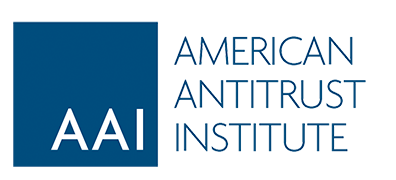The American Antitrust Institute (AAI) has issued a new analysis of horizontal control in the airline industry. The white paper, Airline Joint Venture Agreements: Assessing Impact on Consumers and Labor, explains that the U.S. airline industry is at an inflection point. After almost two decades of consolidation, four airlines control almost 70% of the national market. While the airlines continue to test the regulatory waters on further consolidation, such as the proposed JetBlue-Spirit tie-up, they are also turning to a more creative means of enhancing horizontal control in order to maintain or strengthen their market positions.
The airline joint venture agreement is a leading work-around to government pushback on further merger proposals. Joint ventures stop short of full metal integration via merger, but they often eliminate incentives for carriers to compete independently. The legality of the American-JetBlue joint venture (“Northeast Alliance” or “NEA”) is currently being determined by a federal district court after the U.S. Department of Justice filed a lawsuit to enjoin it in September 2021.
If joint venture agreements are to become the “go-to” strategy for airlines to solidify their hold on concentrated city-pair or airport-pair markets, now is the time to evaluate the competition issues they raise. This includes the full range of any adverse effects from anticompetitive joint venture agreements, including the impact of higher fares and fees, lower quality, and less choice on consumers, but also the prospect of lower wages and reduced bargaining power for vulnerable workforces such as pilots.
The American Antitrust Institute (AAI) has long advocated for vigorous antitrust enforcement and regulatory policy that supports competition in the airline sector. The analysis herein explains why it is imperative that antitrust enforcers and courts consider both consumer and labor market effects in evaluating the legality of airline joint ventures. Section II begins by providing context that explains why further attempts to maintain or expand horizontal control by domestic carriers can be problematic in highly concentrated passenger service markets.
Section III assesses why some airline joint ventures eliminate incentives for partner carriers to compete independently, using the NEA as a case study. Section IV examines key issues surrounding how airline joint ventures are challenged by the government, either proactively through Section 7 of the Clayton Act, or retroactively through Section 1 of the Sherman Act. Section V explains how anticompetitive reductions in output that may result from some airline joint ventures adversely affect consumers and workers. The final section looks at common arguments for why enhanced horizontal control is procompetitive and explains why such efficiencies “defenses” are particularly weak in airline markets.
In light of these findings, AAI urges enforcers and courts to view current and future proposals to enhance horizontal control in airline markets with great skepticism. Anticompetitive agreements that eliminate incentives for the partner carriers to compete independently stand to further tighten the oligopoly that dominates the domestic passenger service, with adverse implications for both consumers and workers. The time for realistic and holistic assessments of the anticompetitive effects of such agreements is long overdue.



